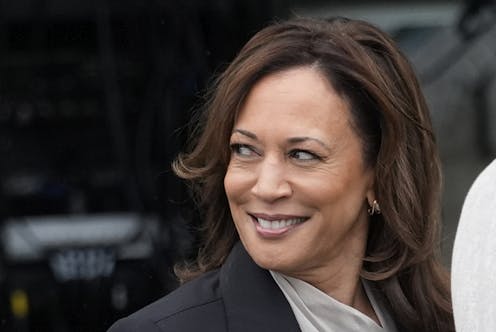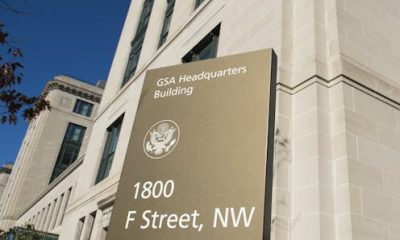
Kamala Harris, at her first public appearance since President Joe Biden endorsed her to be the next Democratic Party presidential nominee. AP Photo/Alex Brandon
Could the primary system – a feature of presidential politics for more than 50 years – be weakened by the Democrats’ choice to elevate Vice President Kamala Harris to the top of the ticket without a competitive nominating process? That may seem unthinkable to voters who have grown up with a democratic primary system, but party nominating contests have, in the past, similarly cut voters out of the process.
Primaries have an inconsistent history in the U.S., as I learned in my research on political parties. When party leaders have seen it as being in their interest to give voters more influence in the primary process, they have done so. When they believed that less-democratic methods could lead to a better chance of victory in the general election, they have done that, too.
You may not know that when you vote in a presidential primary, you aren’t technically voting for the candidate, but for delegates pledged to vote for that candidate at the party’s national convention. Even when a candidate gets enough of these delegates to win, their candidacy becomes official only when the delegates vote at the convention.
This year, something unusual is happening, because almost all of the delegates who were elected in the primaries to vote for Joe Biden are instead voting for Harris – despite the fact that she was not on any primary ballot.
When delegates, not voters, picked the nominee
When the parties adopted the nominating convention as a means of selecting presidential candidates in the early 19th century – the first Democratic National Convention was held in 1832 – delegates to the national conventions were selected at local and state meetings, and then those delegates chose the party’s nominee.
Sometimes, the convention picked candidates with a lot of popular support, as when Republicans selected war hero Ulysses S. Grant in 1868. Sometimes, they picked someone most voters had never heard of, as when Democrats nominated Franklin Pierce in 1852. And sometimes they chose a “favorite son” who was chiefly popular in an influential state, such as Michigan’s Lewis Cass, who won the Democratic nomination and went on to lose the general election in 1848. And often, voters had the sense that the delegates were used as bargaining chips between influential party leaders.
Primaries were based on the idea that voters should have more say in the choice of nominees. Some states and cities experimented with direct primary elections for lower-level offices in the late 19th century, but they were first applied to presidential nominating conventions in 1912.
Delegates to the 1968 Democratic National Convention in Chicago, where a fight was waged between two presidential contenders: Hubert Humphrey and Eugene McCarthy. Humphrey won the nomination and lost the election.
Donaldson Collection/Getty Images
For a brief moment during the Progressive Era – approximately 1901-1920 – a growing number of national convention delegates were selected through primaries, while the remaining continued to be selected through traditional party caucuses and conventions.
In 1912, 42% of GOP national convention delegates were selected in primaries, as were 33% of Democratic delegates. In 1916, the figures were 59% for the GOP and 54% for the Democrats – a sign of the growing popularity of this democratic reform.
That moment was short-lived, as 1920 marked the beginning of a long decline. In that year, the GOP percentage of direct primary-elected delegates declined to 58%, and the Democrats’ percentage declined to 45%. By 1932, the numbers had declined to 38% and 40%, respectively, and the party elites had more influence in both parties for the next 36 years.
A little this, a little that
After that, it was “democracy lite” for the presidential nominating system. Parties entered what political scientists call the “mixed system,” which lasted from the 1930s to the 1960s. Some convention delegates were selected in the meetings that had been the norm in the 19th century, even while a few were selected in primaries. Outsider candidates could get attention by competing in primaries, but they could not secure the nomination by doing so.
The friction between these two approaches reached a peak in the embarrassing Democratic National Convention of 1968. Delegates elected in primaries and pledged to vote for Robert Kennedy or Eugene McCarthy were outvoted by delegates who supported Vice President Hubert Humphrey, whom party elites believed was more electable. Humphrey went on to lose the election to Richard Nixon.
To avoid a repeat of that debacle, Democrats appointed a commission to rewrite rules for delegate selection in time for the 1972 convention. The McGovern-Fraser Commission recommended that more delegates be selected by primaries than by caucuses or conventions, making the nominating process more open to voters. In short, they aimed to end the mixed system and ensure that most convention delegates were selected in primary elections.
As they implemented the new rules, giving the choice of the presidential nominee to voters, they rewrote Americans’ understanding of party democracy as popular, open and diverse.
These democratic expectations have been slowly undermined in the years since. Party leaders have often had doubts about the voters’ ability to pick candidates likely to win in the general election.
These doubts, for instance, were behind the Democrats’ creation of superdelegates in 1984. This gave convention votes to Democratic governors, members of Congress and members of the Democratic National Committee – among others – specifically to act as a check on Democratic voters.
While there were never enough superdelegates to outvote the regular delegates pledged to vote for specific candidates, the expectation was that they could provide enough votes to elect a candidate preferred by political elites over a candidate popular among party faithful but likely to lose the general election.
Over time, party elites – officeholders, activists, donors and campaign professionals – have come to figure out ways to assert power in the nominating process. These influential elites throw endorsements, funding and attention to a chosen few.
A lot of political scientists have focused on the way these folks effectively decide which candidates are most likely to succeed, shaping the primary election long before the first voters tune in and the first votes are cast.
To see this in action, look no further than the role that party insiders played in staving off a primary challenge to President Joe Biden ahead of the 2024 election and the role big donors later played in convincing Biden to drop out of the race by threatening to withdraw campaign contributions.
Headline on a New York Times story from July 12, 2024, about wealthy donors using their money to pressure Joe Biden to drop out of the presidential race.
Screenshot, New York Times
Democrats less democratic
When Biden announced his decision to drop out of the 2024 race, many delegates who were elected in primaries specifically because they were pledged to vote for him declared their intent to vote for Harris. With Biden out of the race, they are free to vote their conscience, and no other candidate has emerged to challenge Harris.
But for the first time since 1968, the Democratic nominee will win the nomination without winning a single primary vote. This may not be as much of a democratic backslide as that of the previous so-called “mixed period.” But it would be a culmination of the elite-oriented trends that have shaped the nominating process since 1984, in which party elites have played an increasingly large role in shaping the presidential nomination.
This is not to add to the frequently heard concerns that democracy is in decline. It does mean that the Democratic Party’s nomination process this year is less democratic than it was in 2020 when Democrats held a vigorous primary contest, even in the midst of a pandemic, or even the Republican Party’s process this year when Donald Trump was challenged by four opponents, including Nikki Haley’s failed but spirited primary campaign.
If Democrats are committed to a democratic nominating process, they could learn from the experience of the McGovern-Fraser Commission. They could acknowledge the democratic deficit in the 2024 process and revisit the rules by which the primaries are governed.
Otherwise, one lesson of 2024 might well be that a democratic primary system is not essential to successful presidential candidates.
The politicians in smoke-filled rooms will warn that primary challengers weaken incumbents and might cost the party its electoral ambitions in the general election. They’ll worry that acknowledging the glaring undemocratic nature of the 2024 process will weaken Harris against Trump.
But if Democrats truly want to make this election about democracy, they might start by looking at the recent trends in their own house.
Daniel Klinghard does not work for, consult, own shares in or receive funding from any company or organization that would benefit from this article, and has disclosed no relevant affiliations beyond their academic appointment.
Advertisement

Advertisement
Contact Us
If you would like to place dofollow backlinks in our website or paid content reach out to info@qhubonews.com











